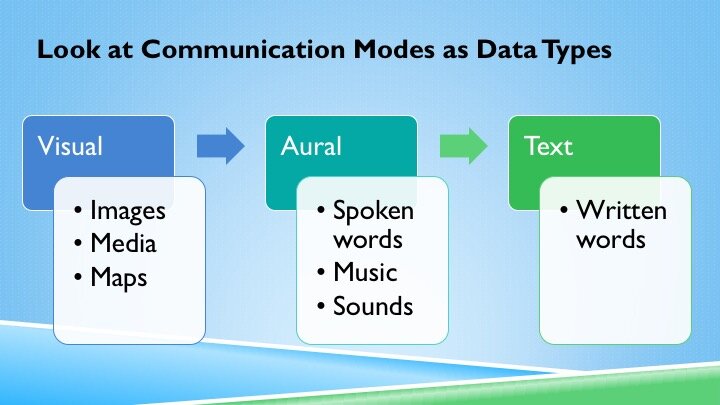Multimodal Qualitative Research to Study Complex Problems
Salmons_Multimodal 2018
Do you experience the world through different perceptual modes?
Think about how you started your day. Did you savor the first sip of coffee and taste of tart berries in creamy yogurt? Did you notice the natural world – signs of the changing seasons, birdsong or new leaves? Did you create your own soundscape with your favorite music on headphones that block out the rest of the world, or did you notice the sounds of traffic and snatches of conversations from people walking by? Did you open your phone and see video clip of breaking news, a picture of your new niece, and start responding to friends and colleagues in your global community? If I want to understand the lived experience of your day, should I invite you to use more than one way to depict it?
What is "multimodal" research?
Some qualitative researchers who want to look at a problem from more than one perspective use more than one method to collect data. For example, a multi method study might include both 1-1 interviews and focus groups. These methods might generate multiple forms of the same type of data, if both the interviews and the focus groups prompt participants to answer verbal questions. Other qualitative researchers generate different types of data representing varied modes of communication and perception. These could include aural, visual, or written types of data. For example, a study that uses both verbal interviews and written diary methods is both multimethod and multimodal. When we mix modes of data, we have the opportunity to understand the participants' lived experiences from more perspective. Or, we can more fully understand the culture and environment of a community or organization. The following list of articles show some ways to design and conduct multimodal studies.
Qualitative Research Examples that Mix Modes and Methods:
“Bridging Language Barriers, Bonding Against Immigrants: A Visual Case Study Of Transnational Network Publics Created by Far-Right Activists in Europe” mixes visual data and a discourse historical approach (DHA) with multimodal analysis (Doerr, 2017). The article is open access: http://bit.ly/2pymfjp.
“Visual intimacy on Social Media: From Selfies to the Co-Construction of Intimacies Through Shared Pictures” uses different types of visual data collected online, with verbal interviews and extant text data (Miguel, 2016). The article is open access: http://bit.ly/2pyYFDd
“Knowledge of Practice: A Multi-Sited Event Ethnography of Border Security Fairs in Europe and North America” uses multimodal data to study events. Data includes “fieldnotes of observations and experiences, photos, video, audio recordings, conference literature and presentations, advertisements, exhibition items, and other ‘found materials’”(Baird, 2017). The article is open access: http://bit.ly/2G3aqbQ.
“Who’s Behind the Lens? A Reflexive Analysis of roles in Participatory Video Research” (Whiting, Symon, Roby, & Chamakiotis, 2016) mixes video with verbal exchanges through in-depth interviews. The article is open access: http://bit.ly/2pypzen.
“Big Web Data, Small Focus: An Ethnosemiotic Approach to Culturally Themed Selective Web Archiving” Mixed Ethnography and Multimodal Social Semiotics (Huc-Hepher, 2015). The researchers collected online data, which is inherently multimodal with embedded media, images, and audio. The article is open access: http://bit.ly/2pxFZnj
“Listening to Voices and Visualizing Data in Qualitative Research: Hypermodal Dissemination Possibilities,” explores new ways to disseminate multimodal research findings (Rasheeta, Erica, & Henry, 2015). The article is open access: http://bit.ly/2G3lq98

